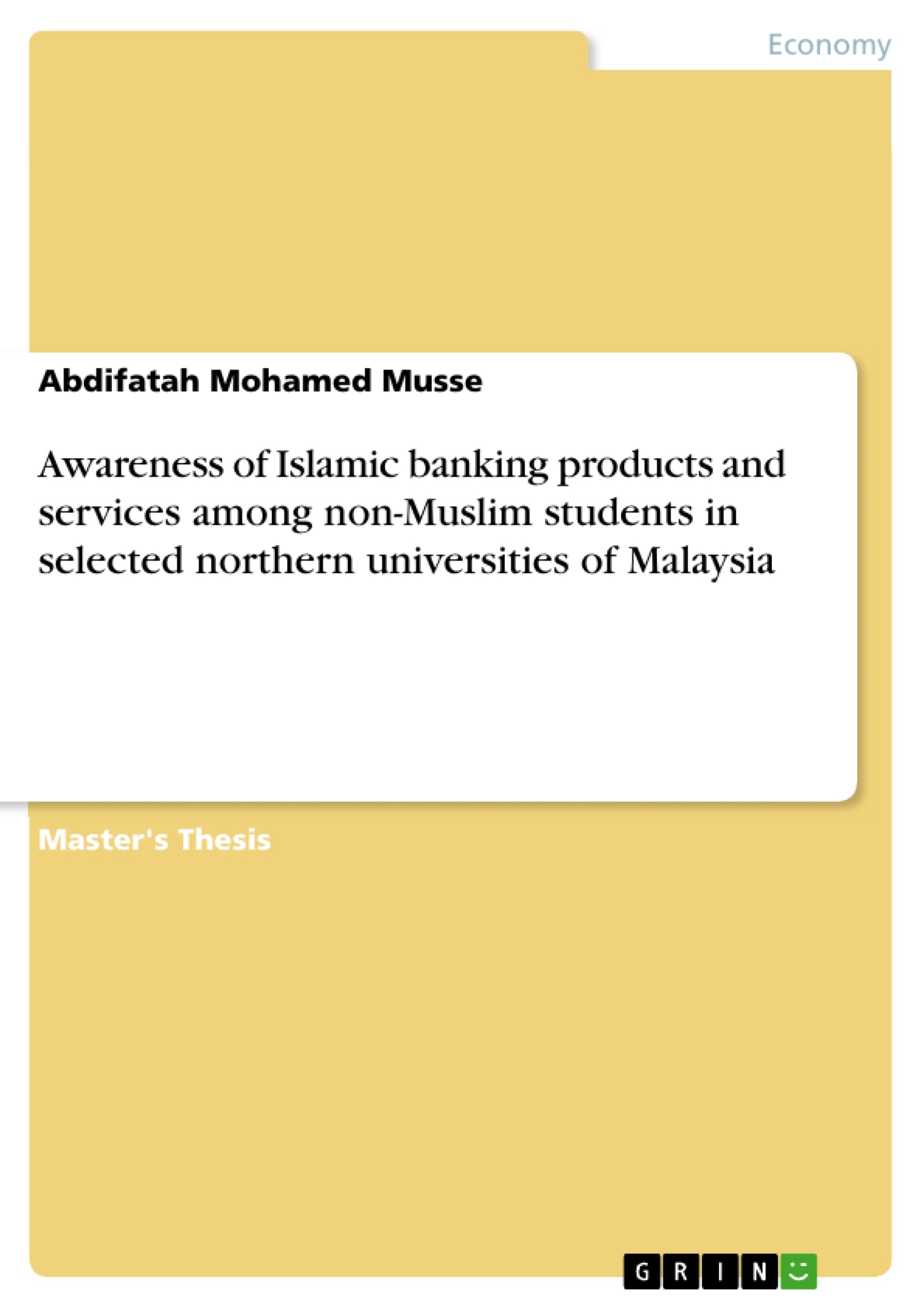Islamic financial industry has shown positive growth that attracts many investors and clients worldwide. Malaysia, one of the pioneer members of this emerging industry, is also experiencing notable development in operating more than seventeen Islamic banking institutions.
However, non-Muslim clients experience difficulties when it comes to understanding the overall system, principles, features, and sophisticated Arabic terms that Islamic banks use.
The purpose of this research is to examine the level of awareness, understanding, and perceptions of non-Muslims in selected northern universities of Malaysia towards Islamic banking products and services. In addition, this study also aims to investigate if there are any demographic factors that influence the awareness, understanding, and perceptions of Islamic Banking products and services among non-Muslim students in selected universities.
The result shows that the vast majority of respondents are generally aware of Islamic banking products and services. Nevertheless, the result also indicates that non-Muslim students do not have enough knowledge and understanding of Arabic terms that Islamic Banks use in their products and services.
The study found that there is a significant relationship between understanding and awareness. Furthermore, the results showed that there is no significant relationship between perception and awareness. Moreover, the study found that demographic factors such as age, religion, and level of education show significant differences among respondents, while gender shows no significant difference among the respondents.
This study contributes to the available literature on the Islamic banking Industry in general while imparting managerial aspects through its recommendations. It suggests that Islamic banking managers should take all necessary steps to adopt marketing policies and other endeavors in order to make sure that all clients of Islamic banks should have a maximum awareness, understanding and positive perception towards the products and services of Islamic banking.
Inhaltsverzeichnis (Table of Contents)
- Abstract
- Abstrak
- Acknowledgement
- Chapter 1: Introduction
- 1.1 Background of the Study
- 1.2 Problem Statement
- 1.3 Objectives of the Study
- 1.4 Research Questions
- 1.5 Significance of the Study
- 1.6 Scope of the Study
- 1.7 Limitations of the Study
- 1.8 Definition of Terms
- Chapter 2: Literature Review
- 2.1 Islamic Banking and Finance
- 2.2 Awareness of Islamic Banking
- 2.3 Understanding of Islamic Banking
- 2.4 Perception of Islamic Banking
- 2.5 Demographic Factors
- Chapter 3: Research Methodology
- 3.1 Research Design
- 3.2 Population and Sampling
- 3.3 Data Collection Methods
- 3.4 Data Analysis Techniques
- Chapter 4: Data Analysis and Findings
- 4.1 Descriptive Statistics
- 4.2 Inferential Statistics
- Chapter 5: Discussion
- Chapter 6: Conclusion and Recommendations
Zielsetzung und Themenschwerpunkte (Objectives and Key Themes)
This research paper aims to assess the awareness, understanding, and perceptions of non-Muslim students in selected northern universities of Malaysia towards Islamic banking products and services. The study also investigates the influence of demographic factors on these perceptions.
- Awareness of Islamic banking products and services among non-Muslim students.
- Understanding of Islamic banking principles and terminology.
- Perceptions of Islamic banking among non-Muslim students.
- Influence of demographic factors on awareness, understanding, and perceptions.
- Recommendations for Islamic banking institutions to enhance awareness and understanding.
Zusammenfassung der Kapitel (Chapter Summaries)
Chapter 1 provides an introduction to the study, outlining the background, problem statement, objectives, research questions, significance, scope, limitations, and definition of terms. Chapter 2 presents a comprehensive literature review on Islamic banking and finance, awareness of Islamic banking, understanding of Islamic banking, perception of Islamic banking, and demographic factors influencing these perceptions. Chapter 3 details the research methodology, including the research design, population and sampling, data collection methods, and data analysis techniques. Chapter 4 analyzes the data collected and presents the findings, including descriptive and inferential statistics. Chapter 5 discusses the findings and their implications, while Chapter 6 concludes the study and provides recommendations for future research and practice.
Schlüsselwörter (Keywords)
The primary keywords and focus topics of this research paper include awareness, understanding, perception, non-Muslims, demographic factors, Islamic banking, products, services, Malaysia, and higher education.
- Citar trabajo
- Abdifatah Mohamed Musse (Autor), 2015, Awareness of Islamic banking products and services among non-Muslim students in selected northern universities of Malaysia, Múnich, GRIN Verlag, https://www.grin.com/document/341090



